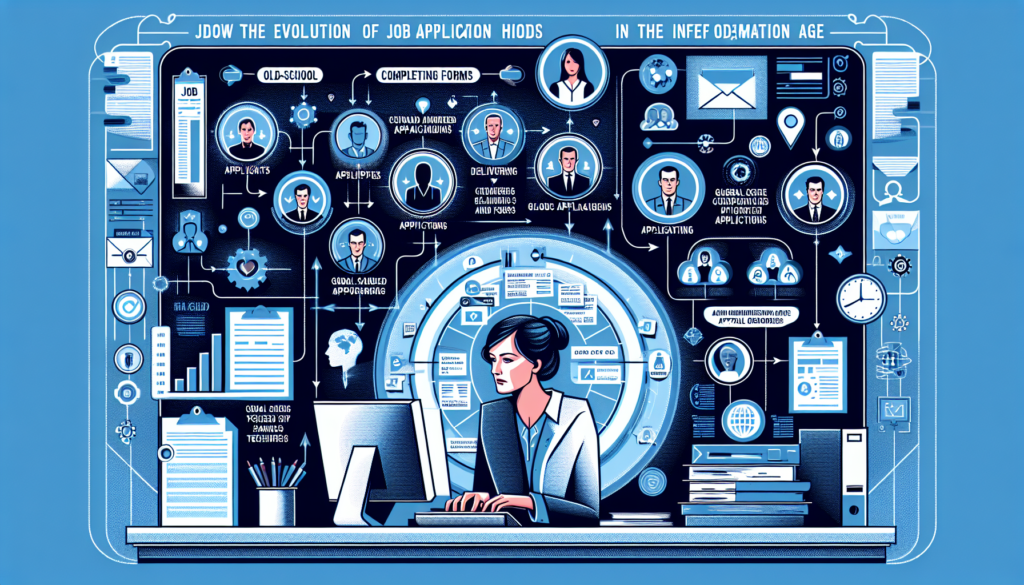The Ultimate Guide to Modern Job Applications: Strategies, Automation, and Success in 2024
Meta: Master the evolving landscape of job applications in 2024. Learn strategic approaches, automation tools, and expert tips to stand out in today's competitive job market.
Did you know that the average corporate job posting receives 250 applications, but only 4-6 candidates get called for an interview? In today's rapidly evolving job market, simply clicking 'apply' isn't enough anymore! I've spent years analyzing job application trends, and I'm here to tell you that the game has completely changed. From AI-powered applications to overseas virtual assistants, let's dive into the new world of job hunting and discover how to make your applications truly stand out!

The Evolution of Job Applications
Gone are the days when job seekers would pound the pavement, resumes in hand, hoping to land an interview. The job application landscape has undergone a dramatic transformation in recent years.
"Remember when we used to mail our resumes?" Sarah, a seasoned HR professional, reminisces. "Now, everything's digital. It's faster, but also more competitive."
Indeed, technology has revolutionized hiring processes. Online job boards, LinkedIn profiles, and company career pages have become the new norm. But it's not just about where we apply; it's also about how companies process these applications.
"Applicant Tracking Systems have changed the game," explains Tom, a recruitment specialist. "They help us manage the influx of applications, but candidates need to be savvy about getting past these digital gatekeepers."
Understanding Different Applicant Types
Not all job seekers approach their search the same way. Let's break it down:
"Basic applicants often take a spray-and-pray approach," Sarah notes. "They send the same resume everywhere, hoping something sticks."
Semi-diligent applicants put in a bit more effort. They might tailor their resume somewhat but still cast a wide net.
"Then you have the strategic applicants," Tom adds. "These folks research thoroughly, customize every application, and often network their way into companies. They tend to have the highest success rates."
So, which type yields the best results? It's pretty clear that strategic applicants have an edge in today's competitive job market.
Automation and Outsourcing in Job Applications
As the job search process becomes more complex, some applicants are turning to technological solutions.
"AI-powered tools can help you optimize your resume or even find suitable job openings," Sarah explains. "But there's a risk of losing the personal touch that can make an application stand out."
Some job seekers are even outsourcing parts of their job search to overseas virtual assistants.
Tom warns, "While this can save time, it raises ethical questions. Plus, you might miss out on learning valuable skills for your career development."
Strategic Application Methods
So, what does a strategic approach to job applications look like?
"It's all about quality over quantity," Sarah emphasizes. "Target the right positions, ones that truly align with your skills and career goals."
Customization is key. Tailor each application to the specific job and company. This means adjusting your resume, crafting a unique cover letter, and researching the company thoroughly.
"Networking can't be overlooked," Tom adds. "Many positions are filled through personal connections before they're even advertised."
Job Market Analysis and Decision Making
Understanding the job market is crucial for a successful job search.
"Always evaluate your local job market," Sarah advises. "But don't forget about remote opportunities – they've exploded in recent years."
Different industries have different dynamics. Tech might be booming in one area, while healthcare is the hot ticket in another.
Tom cautions, "Be aware of market saturation. If everyone's applying for the same type of job, you might need to pivot or find a unique angle to stand out."

Conclusion
Wrap up with actionable steps for readers to improve their job application strategy, emphasizing the importance of balancing automation with personalization. Include a call to action encouraging readers to assess their current approach and make necessary adjustments.




